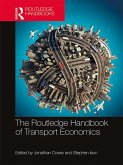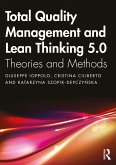Lean Six Sigma entered the aviation and aerospace industries in 1993 in response to significant changes affecting these industries. Since then, Lean Six Sigma has made monumental contributions to the aerospace system. A robust Lean Six Sigma program serves the aviation and aerospace industry well because it gives managers and frontline workers a common language to unite their efforts to improve overall performance and quality. Lean Six Sigma management practices have provided tailor-made solutions that address a multitude of problems experienced by the aviation and aerospace industries alike.
Managing the Aerospace System with Lean Six Sigma: A Roadmap to Success is designed to provide those with a desire to practice the art of Lean Six Sigma - in any industry, but specifically in the aviation and aerospace sector - the tools and knowledge to ensure success. Each part is designed to guide the student/candidate through a Lean Six Sigma structured Body of Knowledge (BoK). Each chapter is designed to support the BoK elements that are aligned with that part topic and ordered so that they progressively build the student/candidate's mastery of the skills needed to progress from "Yellow Belt", through "Green Belt", to "Black Belt". Filled with illustrative examples of how Lean Six Sigma is currently being employed in the aviation and aerospace industries, and how it can be expanded, this book will be a required textbook for teaching Lean Six Sigma. The book is designed for lectures and application in the classroom, for use with students and candidates at all levels of the Lean Six Sigma certification process.
Dieser Download kann aus rechtlichen Gründen nur mit Rechnungsadresse in A, B, BG, CY, CZ, D, DK, EW, E, FIN, F, GR, HR, H, IRL, I, LT, L, LR, M, NL, PL, P, R, S, SLO, SK ausgeliefert werden.









